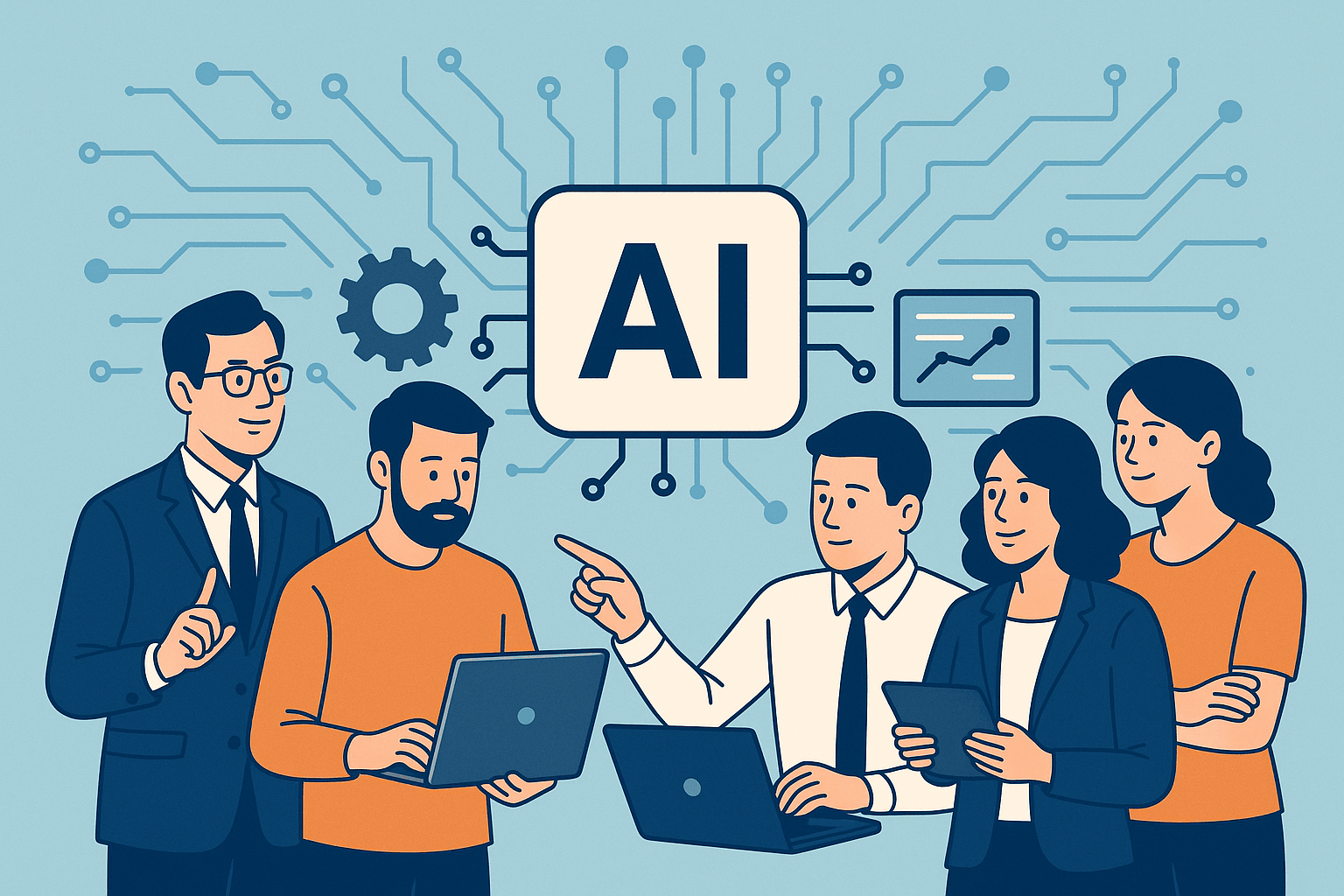
Integrating artificial intelligence into a business is not about “adding technology”: it is transform how teams use data, make decisions, and collaborate.
So the real question is not “What tool should I use?” buts “What skills do we need to bring together to succeed in this transformation?”
In most organizations, the challenge is not technical but human and organizational.
Here are the essential profiles to successfully transition your business into the age of AI.
Mission: Define the vision, prioritize use cases, and align AI with business goals.
It is often a Chief Data Officer, a Head of Innovation, or simply a Convinced leader. He does not code, but understands the technical issues. Its role is to act as a link between business and technical teams, to mediate priorities and to stay the course.
Key skills:
Without this profile, AI projects are likely to scatter or remain stuck in a POC state.
Mission: make data usable for AI models.
Before using ChatGPT or predictive models, you need to know where the data is, in what condition, and how to connect it. The Data Architect (or Data Engineer) sets up the pipelines, harmonizes the formats, and ensures the quality of the data.
Key skills:
Objective: transform a “jumble of Excel files” into a clean and reliable base on which AI can rely.
Mission: create, train, or integrate AI models
It is the technical profile par excellence. It includes models, fine-tunes if necessary, and integrates them with business tools (CRM, ERP, dashboards, etc.). He often works with frameworks like LangChain, Hugging Face, TensorFlow, or PyTorch, and deploys solutions in scalable environments.
Key skills:
This profile is essential for move from concept to concrete use.
Mission: identify use cases, test tools and relay best practices.
It is often a collaborator already in place, trained and supported to become the IA referent of his team. He does not code, but knows how to use tools (ChatGPT, Copilot, Power BI, etc.) and explain their interest to his colleagues.
Key skills:
It is thanks to these profiles that AI is permanently anchored in the organization.
Mission: supervise the use of AI, prevent abuses and guarantee compliance.
This role is becoming essential. He ensures that the projects respect the regulations (IA Act, RGPD) And the ethical principles (transparency, explainability, non-discrimination). In large companies, it is a dedicated position; in SMEs, this function can be carried out by the DPO or the legal manager.
Key skills:
Not every business can afford to build a complete AI team. In this case, the most effective approach is to combine :
Chez Strat37, we often see this model succeeding: businesses start with an external partner, then are gradually increasing in autonomy, by transforming their employees into “AI ambassadors”.
Integrating AI is above all integrate a new way of thinking and collaborating. The tools are evolving, the models are improving, but The human factor remains central. The businesses that will succeed are the ones that will know create bridges between technology and business, and make their teams grow rather than simply replacing them.